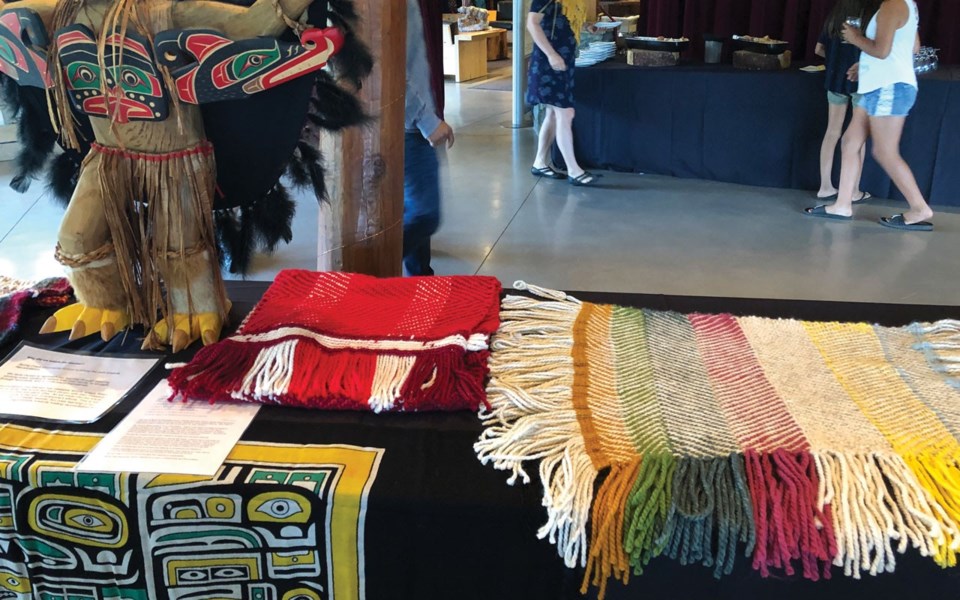When Tanina Williams approached a group of Whistler Secondary School (WSS) students about learning wool weaving, the students were feeling the stress of high-school life more acutely than usual.
"Because we were struggling with certain things in our school, I thought this was one way we could bring everyone together," says Williams, who teaches First Nations knowledge and cultural practices at School District 48 (SD48). "The group I worked with were like, 'Hands down, yeah, we need to do this.'
"All of them have experienced certain things at school and they know they don't want anyone else to experience that. That was really important to them."
Students from WSS, Myrtle Philip and Spring Creek all took part in the project, which taught traditional Lil'wat methods of weaving. As it turned out, students gained more than just a practical skill.
"It's so beautiful because some kids that are really struggling ... if they can do something and give it to somebody else, it just helps them shine. It helps them feel good about themselves," Williams says.
For the most part, students led the direction of the project. Inspired by the 24 Hour Drum, an annual tradition that brings Indigenous and non-Indigenous students together in celebration of local First Nations' culture, students at WSS settled on the theme of diversity for their wool weaving.
"When you have a whole community weaving, learning about local land and culture as well as working together on something where they feel they have an authentic purpose, it does support the learning that local Indigenous culture is relevant and important," says Susan Leslie, SD48's principal of Aboriginal education.
Weaving also proved to be a natural entry point into other areas of learning. It allowed Williams to shed a light on local flora and fauna, history and even math. Ultimately, Williams, who travelled to Italy this spring, where she visited an 800-year-old weaving factory, was able to demonstrate how the skill has been applied across cultures worldwide. She even paid a visit to Ötzi, Europe's oldest known natural human mummy, who she says is shrouded in wool garments that "are exactly the way Squamish and Lil'wat people would have made them."
"I got to talk about how long we've been weaving in the world and that everyone does weaving. So what it does is bridge us together," Williams says. "That was the real important part for me, being able to bridge everyone together and [get the students] to ask their family if they crocheted, if they knitted, if your grandmother made dollies. Because we're all Indigenous from somewhere and it's really important that we recognize that."
SD48 has made huge strides in incorporating Indigenous ways of learning into its curriculum. Leslie believes exposing students to traditional forms of knowledge helps them find their "authentic purpose."
"The belief is, if you connect to the land, the local land and the people, you understand who you are," she adds. "If we make that connection meaningful ... then students ultimately will grow and learn and connect themselves not only to the place they live but globally to the planet. I think it is through land-based learning that students are going to have to actually rise up and foster ecological sustainability."
The district held a ceremony at the end of the school year at the Squamish Lil'wat Cultural Centre to mark the weaving project. Wiliams says the students saw the final product as a symbol of their commitment to making the world around them a better place.
"Kids see the world in such different ways. They know we can all get along," she says.
"They want to be involved in changing the world. They want to be able to do something about it. They might not understand the specific issue, but they do know here is injustice, they understand that there are people hurting out there, and they want to make change."




